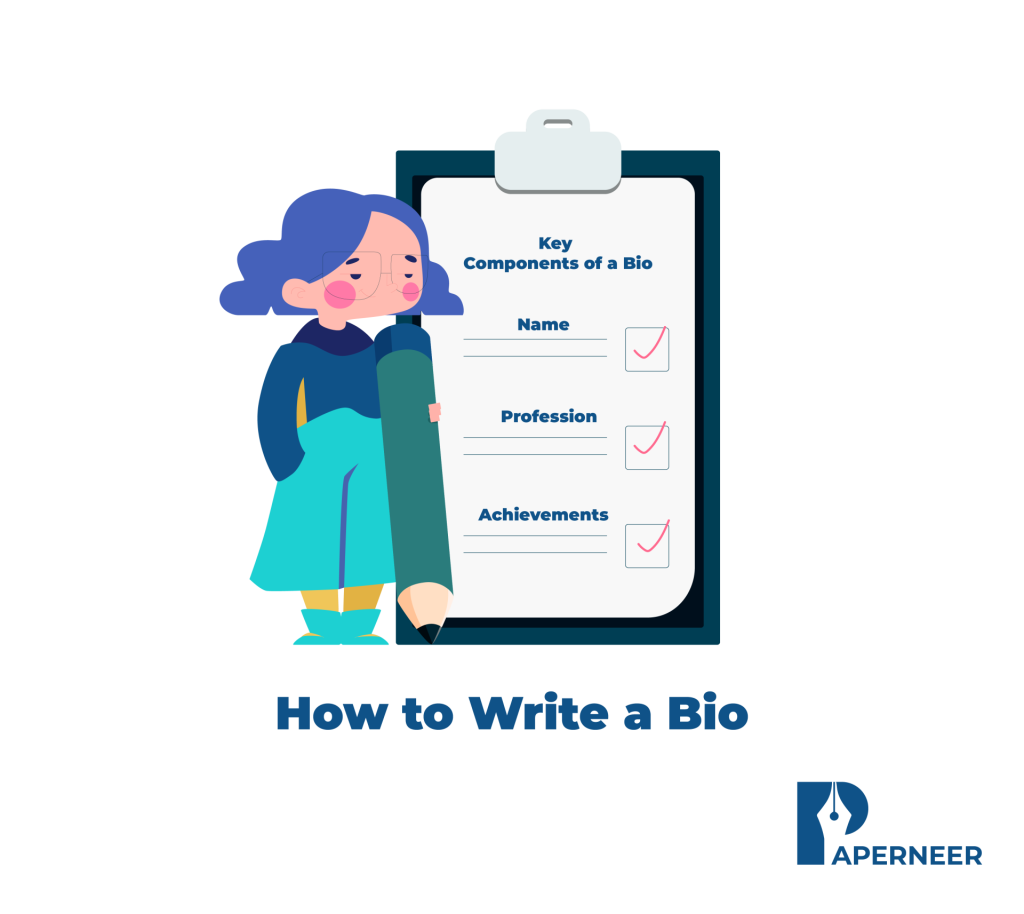Capstone Project – A Complete Guide A capstone project is sometimes the...
Read MoreHow to Write a Bio - Complete Steps

A bio is an abbreviation of a biography. It concisely summarises an individual’s life, professional background, and significant accomplishments. It is a preliminary overview of a person relevant in both professional and private life. Writing a biography enables the person to offer his abilities, experiences, and personality in the most attractive forms to an audience, potential employers, clients, or users of an online community. How to write a bio can differ based on the specific platform or target audience; however, its primary objective remains the rapid and effective transmission of key information about oneself.
Bios are used in various applications, from social media profiles and websites to resumes and book covers. Regardless of the application, your bio must capture your personal story and strengths in enough detail to interest the reader and make them want more. Before writing a bio, though, it is helpful to understand the essential components of a good bio and how to adapt it for different uses.
In this blog brings you:
Key Components of a Bio
As you start to write your biography, there are certain elements you will need to include to make it effective and informative. Though they vary depending on purpose and medium, the following elements are usually considered:
- Your Name: This is perhaps the most obvious of all. Your name must be clearly stated first, as it serves as a background to the rest of the biography.
- Your Profession or Role: Provide your occupation with a job title, career path, or area of specialization so the reader has an immediate understanding of the professional experience.
- Key Accomplishments: Highlight significant successes or recognition of your skills and capabilities. This can include educational background, qualifications, or any notable professional achievements.
- Skills or Specialties: Add critical skills that differentiate you in the marketplace. For example, if you are a digital marketer, you might mention being an SEO, content strategy, or social media management expert.
- Personal Touch or Interests: Adding personal elements makes your bio human-like. Mention a hobby, interest, or passion project that shows another side of your personality.
- Contact Information: Depending on the platform your bio will appear on, including contact information or a link to your portfolio or website is a good idea. This may be an opportunity for further engagement or a way to receive professional inquiries.
Writing Bio for Various Platforms
Bios are of varying length, tone, and content based on the site where you’re posting. You will want to customize your bio to the specific site. Let’s break it down for a few sites:
- Professional Website or LinkedIn: Your bio should be more formal, focusing on professional achievements, skills, and career trajectory. These bios are usually more extended (150-250 words) and give a good view of your professional life. Keeping the bio in line with the platform’s purpose is essential, so focus on qualifications, key achievements, and how you can add value.
- Social Media (Instagram, Twitter, etc.): Social media bios are much shorter and often restricted to a character limit. Here, brevity is key. Focus on your core identity, what you do, and one or two personal details. Include relevant hashtags or a call-to-action (CTA) such as “Follow for updates” or “Check out my blog.” These bios should still reflect your personality but concisely and engagingly.
- Conference or Event Bio: When speaking or appearing at an event, your bio should be more focused on expertise and experience related to the topic or audience. These are usually 100-150 words and contain enough information to build credibility.
- Resume Bio: A resume bio is one to two sentences that capture the essence of your career highlights and core competencies. Keep it tight and professional.
Template for Writing a Bio
Here is a fundamental outline built to guide you through the creation of your bio:
Introduction:
Start with your full name
- Include your job title, profession, or speciality.
- Professional Highlights:
- Mention some achievements or strengths you possess
- Add notable projects, licenses, or awards.
Personal Touch:
- A line or two about personal interests or hobbies (optional)
- Call to Action (optional):
- Provide a way for readers to contact you or follow your work, e.g., “Follow me on Twitter” or “Check out my portfolio at [website link].”
Example: “John Smith is a professional web designer with over 10 years of experience creating user-friendly websites. He specializes in responsive design and has worked with top clients in the e-commerce and entertainment sectors. Outside of work, John is passionate about photography and hiking. Follow his work on his portfolio site: [link].”
How to Write a Short Bio?
A short biography usually has about 50-100 words and attempts to communicate critical information concisely. A good short bio can encompass a person’s profession, great achievements, and aspects of personality in a few lines of text.
When writing a short bio, focusing on the most relevant information is essential. This should include your name, profession, and an achievement or insight that says something about you. It is best to avoid unnecessary content or detailed explanations. Example below:
Example of a Short Bio: “Jane Doe is a freelance writer specializing in content creation for small businesses. With over 5 years of experience, she has written for clients in technology, health, and finance. In her free time, Jane enjoys yoga and reading historical fiction.”
How to Write Bio Examples?
To help you understand the concept better, here are a few bio examples tailored for different platforms:
LinkedIn Bio Example: “With over 10 years of experience in the software development field, Michael Brown is a senior software engineer at XYZ Technologies. He specializes in cloud computing and artificial intelligence and has led numerous successful projects. Michael is passionate about learning new technologies and contributing to open-source software development.”
Instagram Bio Example: “✨ Content creator | ???? Graphic Designer | ???? NYC | Sharing daily design tips | DM for collaborations.”
A “Sarah Johnson is an expert in digital marketing and a frequent speaker at international conferences. She has over 15 years of experience helping brands improve their online presence through SEO, PPC, and social media marketing. Sarah founded Digital Success Agency, a marketing firm helping small businesses grow online.”
Tips for Writing a Good Bio
Here are some final tips for a way to put in writing a bio that leaves an excellent impression:
- Know Your Audience: Your bio should speak to the audience you are attempting to interact with. Tailor it consequently, whether or not it is a skilled audience, potential shoppers, or an informal social media following.
- Authenticity: You need to use a voice that represents who you are. Avoid the extremes of being too formal or casual—instead, realize a balance that reflects yourself.
- Focus on accomplishments: Once you write an expert or personal life story, you need to specialize in your accomplishments. You ought to paint the qualities that distinguish you in your business.
- Keep it Short: A decent life story is transient and manageable. It’s higher to omit reserve info, which will sidetrack the message.
- Update Often: As your career and achievements grow, you should tell your life story. This can be why it should be updated often so it doesn’t become superannuated.
Conclusion:
How to write a bio is one of the significant competencies in today’s professional and personal lives. With an understanding of the essential components, tailoring your bio for different sites, and using a simple structure, you can create a bio that effectively communicates your identity and grabs the reader’s attention. Whether it is a short bio for social media or a long one for an individual’s website, the fundamental principles remain the same: clarity, brevity, and authenticity. Using the above recommendations and examples, people can effectively write a biography that makes an excellent first impression and portrays their personal or professional identity.
Say goodbye to Mistakes in Term Papers
Avoid Errors in Term Papers Writing a theme may be a vital tutorial task that needs careful designing and...
Read MoreUnraveling the Stories: Autobiography vs Biography
Autobiography vs Biography Understanding the excellence between autobiography and biography is crucial for...
Read More




